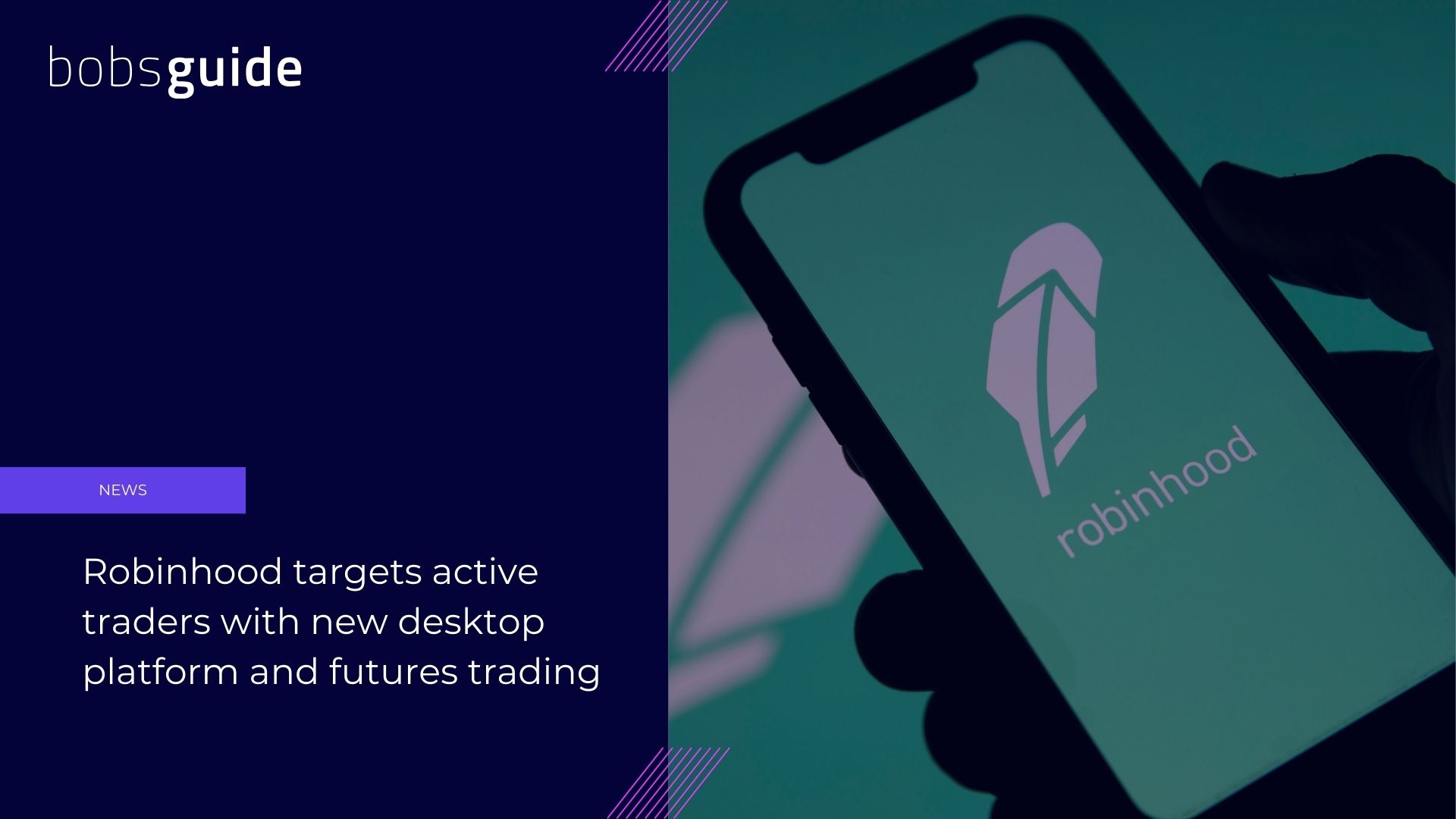Robinhood targets active traders with new desktop platform and futures trading
Fintech disruptor moves to capture seasoned investors with advanced tools and lower fees.
-
Marina Mouka
- October 17, 2024
- 3 minutes

Robinhood Markets has taken another bold step in its evolution from a commission-free trading app for retail investors to a full-service financial services provider. With the launch of its new desktop platform, Robinhood Legend, and the addition of futures and index options trading to its mobile app, Robinhood is positioning itself to attract a more seasoned, active trading demographic. This expansion marks a strategic shift, as Robinhood seeks to compete with established players like Charles Schwab, Fidelity, and Morgan Stanley in the high-stakes brokerage industry.
Announced on October 16, these developments come as Robinhood, an 11-year-old fintech company, aims to cater to a broader range of investors. While the platform initially garnered attention from retail investors during the “meme stock” frenzy of early 2021, it is now making concerted efforts to lure institutional investors and experienced traders.
Targeting active traders
The introduction of Robinhood Legend signals a significant enhancement in the company’s offering. Designed for active traders, the desktop platform provides real-time data, customisable layouts, and advanced charting tools. Steve Quirk, Robinhood’s Chief Brokerage Officer, emphasised that the platform was built to address frustrations in the market, specifically the inefficiency of switching between apps for analysis and trading.
“We’ve matured alongside our customers and have heard loud and clear that they want access to more advanced products and more active trading tools,” Quirk said.
Robinhood Legend New Look on Desktop | Source: Robinhood
Robinhood’s focus on advanced traders is further highlighted by the competitive pricing model it has introduced. Subscribers to its premium Gold service can trade futures for as little as 50 cents per contract, a sharp contrast to Schwab’s $2.25 per contract or Morgan Stanley’s E*TRADE, which charges $1.50 for futures and $2.50 for crypto futures. Additionally, Robinhood’s index options fees, starting at 35 cents per contract for Gold members, significantly undercut the fees of many established competitors.
Futures and index 0ptions – what’s in it for retail investors?
While futures and index options have traditionally been the domain of large institutions due to their complexity and high-margin requirements, Robinhood is making these financial instruments accessible to its retail user base. Customers can now trade contracts based on major indices like the S&P 500, as well as commodities like oil and bitcoin, with low fees relative to the industry standard.
This expansion aligns with Robinhood’s strategic goal of diversifying its revenue streams and enhancing customer engagement. As of the second quarter of 2024, Robinhood had 11.8 million monthly active users and $139.7 billion in assets under custody. The introduction of futures trading has the potential to attract more sophisticated users, particularly those looking for higher-risk, higher-reward financial instruments.
A profitable year (with more to come?)
Robinhood’s growth trajectory has been notable. The company’s stock has surged by over 100% this year, buoyed by three consecutive quarters of profitability. Its Q2 2024 report showed net revenue of $682 million, a 40% year-over-year increase. The expansion into futures trading and the launch of the Legend platform reflect Robinhood’s broader ambition to continue driving “profitable growth” into 2024 and beyond.
As Robinhood prepares to report its Q3 earnings on October 30, investors and industry watchers alike will be keen to see how these new offerings impact its bottom line. With commission-free trading now a staple of the industry, Robinhood’s ability to capture a share of the more complex trading markets could well define the next chapter of its growth story.


 Bobsguide is a
Bobsguide is a